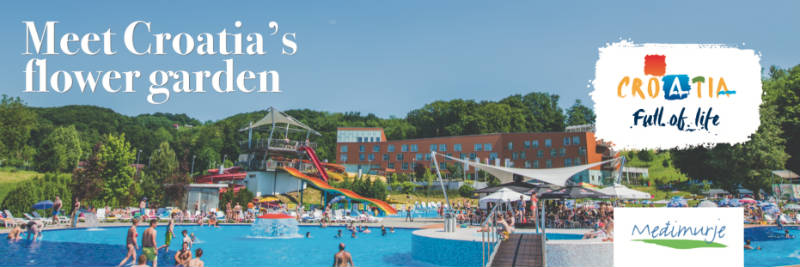LOCATION
 The Međimurje County is the most Northern region in Croatia located between the river Mura in The North and the river Drava in the South.
The Međimurje County is the most Northern region in Croatia located between the river Mura in The North and the river Drava in the South.
In the west, it rolls off the Apls but in its central and Eastern part it runs in to the Pannonian plain.
Međimurje borders with both Slovenia and Hungary and only a short 30km strip of Slovenia divides it from Austria.
HISTORY
Archaeological findings confirm that people have lived in this area since the Neolithic. In the Bronze Age, this is an area of the Celts and Panona that are conquered by the Romans at the beginning of the first millennium. Međimurje is, until the collapse of the western part of the Roman Empire, part of the province of Pannonia, and during the great migration Huns, Visigoths, Ostrogoths, and finally the Slavs passed through here. In 1096 the Zagreb diocese is founded and Međimurje becomes part of it. With Croatian joining a union with Hungary, the people of Međimurje share the fate of the rest of Croatia, with the difference Hungarians considered Međimurje as part of Hungary. Interestingly, the Turks, although they conquered Hungary, never conquered Međimurje. A noble Zrinski family have a huge role in this.
With the disappearance of the Turkish threat, reconstruction and development begins, but Hungarian influenece is also enhanced. Upon completion of the First World War, the people of Međimurje at the big national assembly on the 9th of January 1919, decide that their future will be shared exclusively with the rest of the Croatian people. Since then, excluding the Hungarian occupation in World War II, Međimurje has been part of Croatia. In 1993, after the territorial reorganization, the then Municipality of Čakovec becomes Međimurje, which democratic and free Croatian state recognizes as the historical, geographical, economic and administrative uniqueness of this part of our beautiful country.
POINTS OF INTEREST
- Upper Međimurje hilly landscape pictures are filled with vineyards.
- Čakovec and The old Town, baroque city center and the imposing Wasserburg (dating back to the 13th century.) with its gardens, the home of the powerful Zrinski family.
- Šenkovec – the chapel of St. Jelena and the Zrinski family mausoleum.
- Mursko Središće, the northernmost town in Croatia, once the center of the mining and oil industry. In the nearby Peklenica is the first oil field in the world.
- St. Martin na Muri – the center of the milling tradition.
- Štrigova surroundings – picturesque villages in the vineyards. The church of St. Jerome with frescoes made by I. Ranger (18th c.) are to been pointed out. According to some sources St. Jerome was born here.
- Regional Park Mura-Drava is part of the international UNESCO Biosphere Reserve Mura-Drava-Danube which protects the largest European corridor of natural flows of lowland rivers. Particularly significant wetlands and waterfowl habitat.
- Museum of Međimurje (Čakovec) located in the Zrinski palace, includes several collections (archaeological, historical, ethnographic, art), has a library and restoration workshop.
- The center of dr. Rudolf Steiner (Donji Kraljevec), with his birth house, dedicated to the study and promotion of Steiner’s worldview through workshops, lectures and exhibitions.
- Mining Cimper Memorial Home (Mursko Središće) an exhibition and tool display of the mining tradition.
- Cycle paths around Međimurje are mainly on roads with a low traffic frequency. Included is the international track Mura-Drava bike with the asphalt and off-road options.






